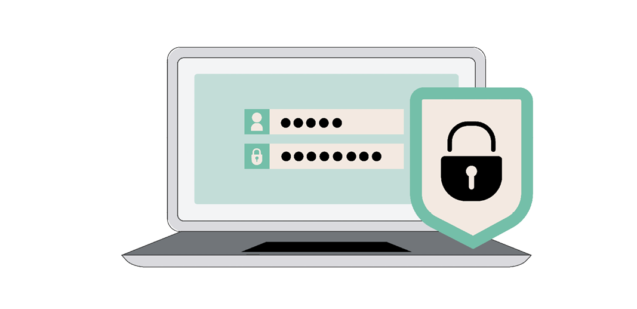Categories

In February 2019, US News & World Report conducted a survey to find out whether consumers are taking precautions to protect themselves from fraud or identity theft. According to the survey results, approximately 23 percent of the respondents shared that they had fallen victim to a scam of some type within the past three years. Surprisingly, nearly 39 percent admitted they had never taken any preventative measures to safeguard their personal information during the same three-year period.
With more than 1 million cases reported every year, it’s clear that credit card fraud is a major problem. In most instances, preventing fraud is easier than recovering from it. Follow the below simple steps to help protect yourself from credit card fraud.
Start by securing your mail
Unless your mailbox is locked, criminals have easy access to your credit card offers and financial statements. Picking up your mail as soon as it’s delivered is the easiest way to keep these items safe, but work schedules make that an impractical strategy for many people. To keep your postal deliveries as safe as possible, upgrade to lockable mailbox. For extra protection, you can also sign up for USPS Informed Delivery®. This free service sends a digital snapshot of the mail you will receive each day via text or email. A quick comparison of the USPS summary and the delivered pieces makes it easy to determine whether anything is missing.
Review your statements carefully
When it comes to identifying fraud, there’s no substitute for physical reviews of your monthly credit card statements. If you use your credit cards sparingly, a quick scan should do. If you use them extensively, a thorough review is essential. Many fraudsters use small purchases to test whether a stolen credit card is viable before attempting larger purchases. If you spot an unknown or unauthorized transaction on your statement, contact your credit card provider immediately to report the fraudulent activity.
Shred your paper documents
When monthly account statements pile up, it’s tempting to declutter by tossing them in the trash. Shredding them is a better option. This drastically reduces the chances your financial details will wind up in the hands of dumpster-diving criminals. If you don’t have a shredder and have no intentions of purchasing one, going paperless is a smart option. Contact your card provider and ask them if they offer paperless statements. Not only will you do something good for the environment, you’ll boost your chances of avoiding credit card fraud in the process.
Monitor your credit report
Online transactions are more convenient than ever — for you and for scam artists, which makes it critical that you keep tabs on your credit report. Regular monitoring is an effective method for identifying errors, inconsistencies, and fraudulent activity. Since there are three main credit reporting bureaus, it’s important to review all three. Federal law allows you to obtain your credit report once a year at no charge, which makes reviewing it easy and affordable. Visit www.annualcreditreport.com to get a free copy of your credit report today.
Use passwords on everything
Think about how much personal and financial information you have stored on your home computer, your laptop, and your smartphone. Doesn’t it make sense to protect all those sensitive details? Take time to set up password protection on your computer, phone, and any other electronic device you use to access your finances. And while you’re at it, be sure to use a password on your home’s Wi-Fi router. This precautionary step protects your home’s wireless network and reduces the risk of drive-by hackers.
Use mobile payment apps
There’s a good chance your phone contains a mobile payment application, but if you’re like many consumers, you’re hesitant to use it. As mobile technology improves, so does the security of apps like Apple Pay, Android Pay, and Samsung Pay. Using these payment options, which usually require a two-step verification via your thumbprint, passcode, or facial ID, is a safe, convenient way to avoid many of the inherent risks that come with using a physical card to make purchases.
Be on the lookout for skimmers
Skimmers are illegal scanning devices that criminals install over the top of card readers. Most often used at ATMs and gas pumps, skimmers scan and record your credit card information as you slide your card through a point of purchase card reader. Designed to be easily removed, these devices may fit the machine closely but not securely. Before you use your card, inspect the card reader and keypad for looseness. Some skimmers are simple to spot; others are not. If you’re unsure, pay inside.
Secure your online shopping
There’s no denying the fact that the Internet has changed the way we shop. The more convenient shopping becomes, the more likely we are to become lazy when it comes to securing our purchases. If you’re shopping online, verify the site is secure by looking for the closed lock symbol and “https” at the start of the web address. If you’re shopping on an unfamiliar site, research the company before buying anything. A great deal isn’t so great if it compromises your credit card information.
Be careful about sharing your card number over the phone
There are still reputable businesses that conduct business over the phone, so it’s impossible to make a blanket statement like “Never give your credit card information over the phone.” However, if you are going to share your card number by phone, it’s best to only do so on calls that you initiated. Additionally, be sure you give out the information in a private area where nobody else can overhear your conversation.
Keep up with current scams
Fraudsters can get pretty creative. The moment you think you know all the tactics employed by scam artists is the moment you need to worry. Lack of education — or worse yet, overconfidence in your scam detection skills — can leave you vulnerable to the latest schemes. Thanks to online resources like the FTC Scam Alerts it’s easy to stay informed.
Report lost or stolen cards immediately
When you realize your credit card has been lost or stolen, it is critical to report the loss to the credit card provider as soon as you realize the card is missing. The sooner you let them know, the sooner they can freeze the account. Sure, there may be the odd occasion where you report the card as lost only to find it soon after, but the inconvenience of waiting for your new card to arrive pales in comparison to the hassle of recovering from fraudulent charges and identity theft. To make reporting simple, save your credit card provider’s phone number to your contacts. That way you won’t have to hunt for it if your card goes missing. That simple step can save valuable time — and money!
For more information on Spero’s fraud protection efforts, visit our Member Alerts page or stop by one of our branch locations to speak with a team member.



